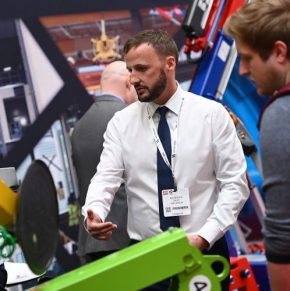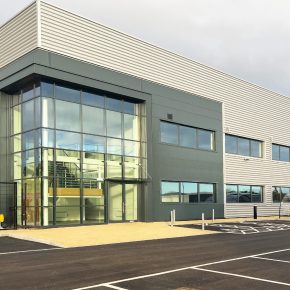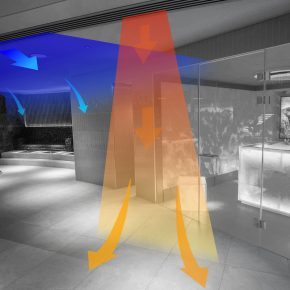
How to achieve hospital security on a budget
It goes without saying that for those in need of a medical procedure or who are in a vulnerable state of health, there is a need to be looked after in an environment that is safe and secure. Appropriate health and safety equipment must be present within hospital buildings in order to minimise the risk of crimes or accidents. However, for those institutions funded by the National Health Service, financial plans are only just in the process of being finalised due to the changes published last year in the Health and Social Care Act 2012, which came into force on 1 April 2013. As a result of this restructuring process, local authorities will be in charge of allocating their own budget in order to meet the specific needs of their communities and the amount allocated to security solutions in hospitals will probably vary from borough to borough.
Regardless of the available budget, however, there will always be a legal requirement for essential security equipment such as high quality safes for controlled drugs. The aim is to achieve the perfect balance between maintaining a welcoming, safe environment while providing sufficient protection for patients and hospital employees, in addition to safeguarding valuable assets such as medical equipment and drugs.
Localising security
Hospitals present their own unique challenges in terms of safety and security, not least because they are effectively open campus environments. Staff are unable to carefully monitor who is entering the building at every moment of the day and night and are unlikely to stop and question a stranger due
to the large volume of people coming and going. Coupled with the sizeable amount of controlled drugs that are administered and stored on site, identifying and implementing appropriate safety measures is vital.
The most effective method of safeguarding substances like Controlled Drugs is to localise security within small areas through the installation of safes and secure cabinets, as these are far easier to protect than an expansive area. It is vital, though, that the physical products selected meet the relevant security legislation. Small stocks of controlled drug raw materials and preparations must be held in safes that have been certified to BS/EN 14450, or in cabinets that comply with the specification set out in the Misuse of Drugs (Safe Custody) Regulations 1973 and these should ideally be constructed from heavily graded material, such as mild steel sheet at least 2 to 3mm thick. The safe or cabinet must also be fitted with a robust lock, such as a multiple point locking mechanism. Safes certified to BS/EN 1143-1 can also be used for smaller volumes of controlled drug raw materials. In both cases, the safe or cabinet must be agreed upon following discussions with the Home Office Drugs Licensing & Compliance Unit.
Leading manufacturers of physical security products can offer a variety of robust safes that are specifically designed to meet these regulations. Decision makers in the healthcare sector are also advised to look for appropriate test house badges and logos to prove these products have been independently tested and subjected to severe attack tests in order to meet the relevant criteria. Features to look for include a steel body at least 4mm thick, 3-way locking bolts and a VdS Class 1 approved safe lock to ensure optimum security. A dual locking facility will enhance the level of security still further, and it is also greatly beneficial to have a choice of locking systems, from various electronic locks to wheel combination locks, so that the safe precisely meets the needs of the individual department or hospital.
Controlled access
However, it is not just controlled drugs that need to be kept secure. Hospitals are filled with expensive equipment that could either be stolen or that would be dangerous or costly to replace if tampered with. In addition, the presence of newborn babies unfortunately brings the threat of abduction if strangers were able to gain access to the maternity wards. Therefore, it is important that rooms containing medical equipment or infants remain inaccessible to anyone who is not a member of staff. One of the most simple and effective methods is to put access control measures in place using mechanical digital door locks, which are utilised in numerous hospitals across the UK and offer a number of advantages over traditional key lock systems. As well as being self-contained, these locking systems eradicate the need for keys, cards or tokens which can get lost, damaged or stolen. If codes are compromised, security can be reinstated quickly and easily. Mechanical digital door locks can be installed either internally or externally, with high quality, industrial stainless steel options providing a long-lasting solution.
Safety and mirrors
Safety and security go hand in hand, especially within busy hospital environments, and mirrors have become another important and cost-effective factor in accident prevention. When strategically placed, convex mirrors can greatly improve visibility and eliminate blind spots, thereby reducing the risk of collisions and subsequent injuries. This is particularly important in busy areas such as hospital corridors and at intersections. The choice of mirror is dependent on the application, with quarter face mirrors best suited for corner placement, half face mirrors ideal for corridor intersections and round convex mirrors suitable for areas such as reception for increased surveillance.
Mirrors can also be used as a powerful deterrent for antisocial behaviour in areas such as A&E, where staff are at higher risk from patients who may be under the influence of drugs or alcohol. Dome mirrors offer an effective security measure, as they provide a 360° view when installed on a ceiling, allowing staff, patients and visitors to better monitor their surroundings.
Externally, car parks, drop-off points, ambulance bays and pedestrian crossings can also be made safer with the installation of external security mirrors, which will be built to withstand outdoor environments. When positioned correctly, these mirrors will optimise the field of vision for drivers and reduce the likelihood of collision.
With such an extensive range of safety and security products available to meet the needs of the healthcare sector, local authorities can easily purchase equipment that will fulfil their risk assessment criteria and meet legislative requirements while remaining within budget. A good supplier will also provide extensive advice from initial enquiry through to final installation, ensuring maximum protection for hospital staff, patients and visitors.
Latest news

2nd April 2025
FIT Show 2025 Launches Innovative Marketplace Feature to Enhancing Value for Installers
FIT Show, the UK’s leading event for the window, door, flat glass, hardware, and roofing industries, is excited to announce the launch of a brand new Marketplace feature at its upcoming 2025 event (Birmingham NEC, 29 April – 1 May).
Posted in Architectural Ironmongery, Articles, Building Industry Events, Building Industry News, Building Products & Structures, Doors, Exhibitions and Conferences, Glass, Glazing, Hand Tools, Innovations & New Products, Plant, Equipment and Hire, Power Tools, Restoration & Refurbishment, Retrofit & Renovation, Roofs, Seminars, Training, Windows
2nd April 2025
Hi-spec deployment of EJOT Colorfast at new Birmingham logistics park
EJOT Colorfast fasteners have been used extensively in the construction of eight new high-specification warehousing and logistics buildings at the Urban 8 Logistics Park in King’s Norton, Birmingham.
Posted in Articles, Building Industry News, Building Products & Structures, Building Systems, Case Studies, Facades, Restoration & Refurbishment, Retrofit & Renovation, Roofs, Walls
2nd April 2025
SWA member delivers ‘fresh Hope’ for university’s Sustainable Building department
A detailed contract to restore an iconic Art Deco building in the heart of Birmingham’s Jewellery Quarter was carried out by Steel Window Association member, The Window Repair Company (Northwest) Limited.
Posted in Articles, Building Associations & Institutes, Building Industry News, Building Products & Structures, Building Systems, Case Studies, Glass, Glazing, Restoration & Refurbishment, Retrofit & Renovation, Steel and Structural Frames, Sustainability & Energy Efficiency, Windows
1st April 2025
Gilberts Takes Thermal Comfort to New Heights
Gilberts Blackpool is continuing to build on its reputation as a pioneer with the unveiling of ThermaAstute™ – the most extensive range of thermally sensitive diffusers in the market.
Posted in Air Conditioning, Articles, Building Industry News, Building Products & Structures, Building Services, Facility Management & Building Services, Heating, Ventilation and Air Conditioning - HVAC, Innovations & New Products, Restoration & Refurbishment, Retrofit & Renovation, Sustainability & Energy Efficiency
 Sign up:
Sign up: